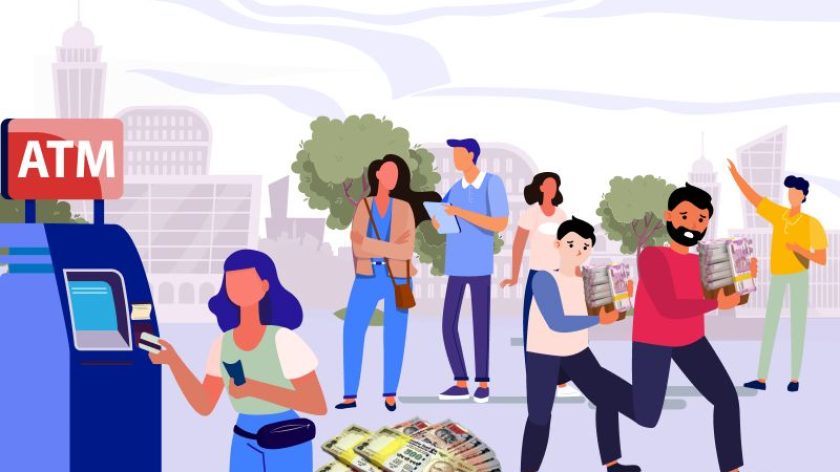Demonetization: Did we go corruptionless and cashless?

This post has been authored by Shwetha Vincent and Anjan Kumar, Research Analyst Interns at Arthashastra Intelligence
“To break the grip of corruption and black money, we have decided that the five hundred rupee and thousand-rupee currency notes presently in use will no longer be legal tender from midnight tonight”, said our prime minister on November 8, 2016. Did demonetization really break the grip of corruption, black money, tax evasions, counterfeit fiat circulation, and funding of terror outfits?
Demonetization was an act done in utter confidentiality. The Union Cabinet, the RBI, and the Income tax department were not consulted. This was evident from the subsequent unplanned events and speeches. This move took out 86% of the currency out of circulation (as on Nov. 8, 2016) and the government estimated around 5,00,000 crores (approximately 20% of the currency in circulation) to never return into the economy.
Every claim that the government made was proved to be false in part or full. RBI clarified that around 99.3% of the currency was deposited into the banks, which shows the false estimation made by the government. The after effects of this move were quite drastic. The 8.3% growth in 2016-17 dipped to 4% in 2019-20, and the Bombay stock exchange fell by a margin of 6%. The unorganized sector was the worst hit with 7,00,000 units shut and 1.5 million jobs lost. Black money and the corruption were back on their feet. Moreover, the hardship that people have gone through in withdrawing their hard-earned money should not be forgotten. A recent survey report by Local Circles revealed: 70% of the people who bought property in last 7 years paid part of their payment in cash and around 16% paid half the payment in cash, 95% of the people used cash for their regular purchases like groceries, food expenses etc., and 75% of the people made payment in cash for services like house help, home repairs etc. When the path of failure was clearly visible, the head of the state made a statement where he sidelines his earlier agenda of curbing black money and corruption, instead pushing for cashless economy.
Although the usage of cash has declined in present due to digital evolution, a large part of the credit should be attributed to the previous pandemic affected year. According to Reserve Bank of India (RBI) data, currency in circulation for the fortnight ended October 8, 2021, stood at a record high of Rs. 28.30 lakh crore, up by 57.48%. Cash in hand particularly rose by 211% from 9.11 lakh crore in 2016. On a year-on-year basis, currency in circulation rose by 8.5%. The rise in 2020 was primarily due to COVID-19 and the implementation of stringent lockdown where people held cash for emergency needs. Furthermore, the cash to GDP ratio increased from 10-12% to 14-15%. This is quite a contrast to see, as the state’s growth, consumer spending, employment benefits etc., are diminishing, but the cash ratio is increasing. That is because of some certain reasons, first being agriculture and informal sector. Agriculture employs 40% of India workforce and large part of it being informal in nature. Moreover, the tax exemptions available in it has considerable triple down effects. Furthermore, the large part of small and medium traders in unorganized sector who contribute 60% to the economy may be off the tax slabs, who in return deal maximum share in cash. Second, no decrease in corruption and tax evasions due to their copious and robust structure may have fueled the problem further. Third, velocity in circulation of currency slowed down significantly due to COVID-19. Fourth, concentration of currency in circulation due to such slowdown in velocity and increase of pledging of resources for survival have made inflation rise. Fifth, cash is still king.
A recent study suggested, 90% of the E-commerce trade may happen in cash in Tier 3 and 4 sectors, and 50% in Tier 1 and 2 sectors of Indian economy in coming future. This clearly illustrates the traditional notion of usage of cash. Even after introduction of schemes like Jan Dhan, approximately 15 crore Indians have no bank account and their daily work still is dealt in cash. Government should understand that a confidential policy and its forced implementation will not lead to the aimed results without adequate planning and preparation. Instead, it will adversely affect those that are most vulnerable. It may create chaotic environment and create opaque barriers for the near future. Demonetisation is now a mere bump in the past with the government never addressing its propounded affects or failure to achieve.
